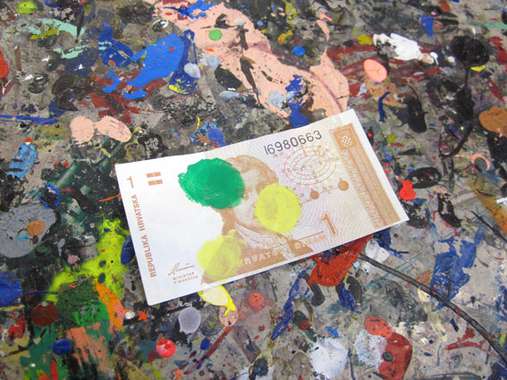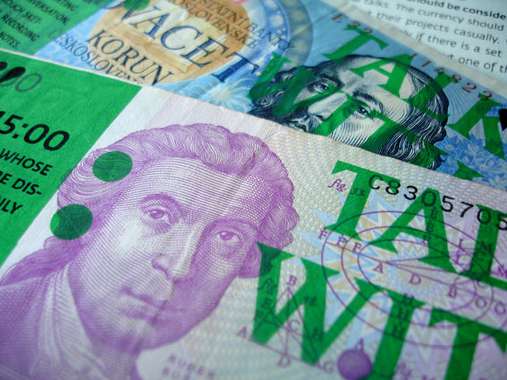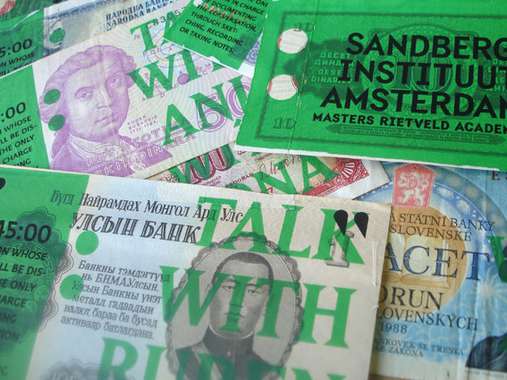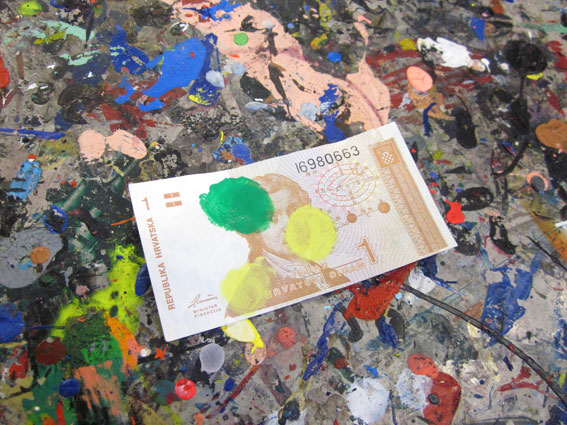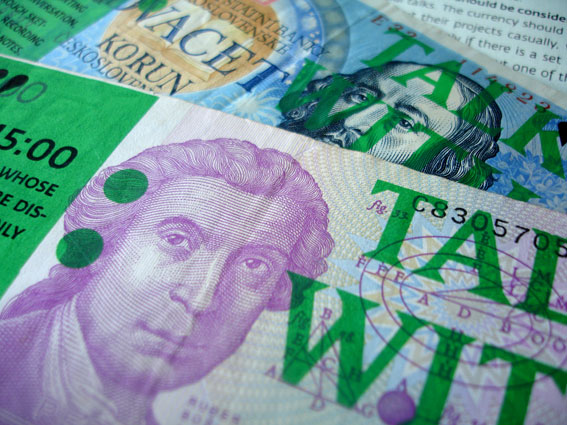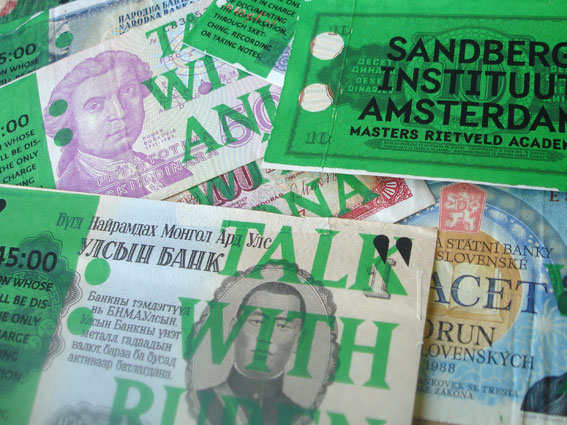Sandberg Design Department Currency
by Anja
This work has been commented by 1 curator(s). Read the comments
Title
Sandberg Design Department Currency
Headline
Alternative Currencies
Concept author(s)
Anja Groten
Concept author year(s) of birth
1983
Concept author(s) contribution
I came up with the idea of initiating this currency during a workshop with ÅBÄKE in Spring 2010. The assignment of this 2-days workshop was to take over another students` research project. I took over Chris Lee`s research on alternative and local currencies and came up with the idea of a Sandberg currency. I opened the topic for discussion, which helped me improving the concept and involved everbodies opinions. After the summer I launched the New Sandberg Currency for the design department.
Designer(s)
Anja Groten
Designer(s) year(s) of birth
1983
Designer(s) contribution
i bought a bunch of real money bills on ebay and printed my design over them. Therefore all bills have a different format. They have the name of the owner printed on them and are worth 45 minutes talk. Bills can be freely traded. And every person can order their own bills over and over again, because it is firstly their own time they are giving away. They can of course also trade other peoples bills, which is interesting to see he shifting value of eachothers time.
Designer(s) Country
Netherlands
Copy author(s)
Anja Groten
Copy author(s) year(s) of birth
1983
Copy author(s) contribution
I wrote the project and currency description and regulations. Published on: http://sandberg.nl/design/?s=currency Proof-reading by Davey Whitcraft (http://www.davey.la)
Copy author(s) Country
Netherlands
Other author(s)
Students of the Sandberg Institute Amsterdam, Design Department 2009/2010
Other author(s) contribution
2008/2010 Krimo Benlaloua Camila Bustamente Pinar Demirdag Annelou van Griensven Femke Herregraven Viola Renate Chris Lee Henrik van Leeuwen Katja Novitskova Michail Oustamanolakis Matthias Schreiber Michele Champagne 2009/2011 Brigiet van den Berg Simona Kicurovska Lauren Grusenmayer Janneke de Rooij Anja Groten Maartje Smits 2010/2012 Noor van Eekelen Guido Giglio Seungyong Moon Ruben Pater Stefan Schaefer Yuri Veerman Nikki Broermann
Other author(s) Country
Netherlands
Friendly Competition
Love Conflict Imagination (2010-2011)
Competition category
Mobilization
Competition field
academic
Competition subfield
student
Subfield description
Sandberg Institute Amsterdam
Check out the Love Conflict Imagination 2010-2011 outlines of Memefest Friendly competition.
Description of idea
Describe your idea and concept of your work in relation to the festival outlines:
In times of financial crisis and obvious grievances caused by the current capitalist system it is important to rethink value in general.
Therefore I tried to rethink the value of the Sandberg institution I am studying at, the Sandberg Institute.
I created a social alternative currency for the design department of the Sandberg Institute. The currency is based on the main, non-materialistic value of the Sandberg, – the mental and intellectual exchange between the students.
What kind of communication approach do you use?
Communication is the the foundation, this project is based on. Every student gets his or her own bill, worth 45 minutes talk with him or her. The project is only initiated by me but functioning an spead by my fellow students. Therefore it is a collaborative experiment which works out very good so far.
What are in your opinion concrete benefits to the society because of your communication?
A critical attitude is unavoidable for me as a designer. This critical practise we share among the students at the Sandberg Institute. But for me personally critical doesn´t mean to only question but also to rethink current systems and to make actual proposals. I think even little experiments that turn things upside-down and show alternatives can benefit to the society.
What did you personally learn from creating your submitted work?
What I learned from creating this alternative currency that it is important to actually do things and not only talk about it. The best ideas in theory are even better in practise.
Why is your work, GOOD communication WORK?
With the Sandberg Currency I created something that is real.
My goal was to embrace the value of the mental and intellectual exchange between the students at the SI. To stimulate this value even more I suggested to add an official and organized aspect to it. – A currency that is delegating and organizing this exchange between the students.
I succeeded. The students were first very criticlal towards this new "regulation" (There are not many regulations at the Sandberg so far) but by discussing the new currency they opened up for it and gave it a try.
Now most of them are actively using their bills, which confirms my acknowledgement of the people I study with, who are very critical but open for alternatives.
Where and how do you intent do implement your work?
The New Sandberg Design Department Currency is in active use at the Sandberg Institute Amsterdam since September 2010.
Did your intervention had an effect on other Media. If yes, describe the effect? (Has other media reported on it- how? Were you able to change other media with your work- how?)
Curators Comments

Kevin Yuen-Kit Lo
An interesting, timely and relevant project that addresses very many complex issues. Questions of (symbolic vs. real) value, exchange, labour, locality/community and more are raised, though I'm unsure if any answers are really provided.
Nonetheless, it is a very thought provoking experiment. In some senses, this currency is a simplification and pure example of the basis of exchange value being time (or is it energy?), and through this lens it doesn't change the role of currency at all, it just focuses it. And then there is the fact that it can only exist within a closed system, and what that means to the community that uses it. Could it be pushed "outside" and still exist? I am really curious for more details as to how the project evolved in the sandberg context, have people been accumulating these (capital?) or has it been a free and open exchange? Has there been attempts at barter or changing the baseline value?
From a design standpoint, currency is also very interesting. I wonder if rather than re-appropriating existing currency for this project, a new currency could bve designed that represents the "national" history and pride of the institution. All the coded values embedded in currency could really be explored.
An interesting project somewqhat related to this is the idea of open-source alternative currencies, perhaps best exemplified by bitcoinb: http://www.bitcoin.org/

